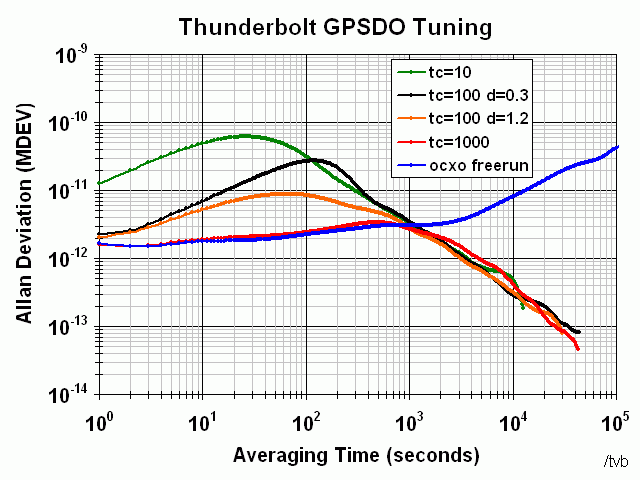
10-Dec-2008
Because of the low short-term noise of the LO (local oscillator) and the comparatively high short-term noise of the GPS receiver, a GPSDO (GPS disciplined oscillator) needs to average over time to obtain the best features of both sources. So what is the ideal averaging period, the time constant?
If the time constant is too short the excellent short-term stability of an OCXO is polluted with the jitter of the GPS timing pulse. On the other hand, if the time constant is too long the frequency drift of the LO is not quickly corrected by the better long-term accuracy of a GPS timing receiver and the output of the GPSDO will wander.
It is not uncommon for OCXO to be stable down to 10-11 or 10-12 levels, which is on the order of tens to a few picoseconds over a second. By contrast, the timing jitter from most low-cost GPS OEM timing boards is on the order of tens to a few nanoseconds over a second. Looking long-term, many OCXO have drift rates on the order of perhaps 5×10-11 to 1×10-9 per day. A GPS timing receiver has essentially no long-term frequency drift since over days and weeks it follows UTC.
Some GPSDO provide a way to set the time constant so that the user can experiment with different parameters; settings that better match the actual performance of the GPS pulse, or better match the actual short- or long-term performance of the OCXO. Or settings that better address the tightly controlled, or perhaps wildly uncontrolled, environmenal conditions in which the GPSDO will operate.
Below are some initial results of playing with different settings on a well-aged, pre-tested Trimble ThunderBolt GPSDO.
Below is a frequency stability (Allan deviation) plot of five separate runs of the same GPSDO. One was in free-run, or hold-over mode (no GPS antenna connected) and the others were all in GPS-locked mode. The time constant was varied from 10 seconds, to 100 seconds (the default), to 1000 seconds.
In the case of 100 seconds two runs were made: one with the damping factor set to 1.2 (the default) and the other at 0.3.
This particular Thunderbolt had been powered on for many months which explains the unusually low frequency drift rate (under 5×10-11 per day). Environmental conditions during these runs were rather good as well.

Click on Setup -> Disciplining:

See default or current value of Time Constant (100) and Damping (1.2):
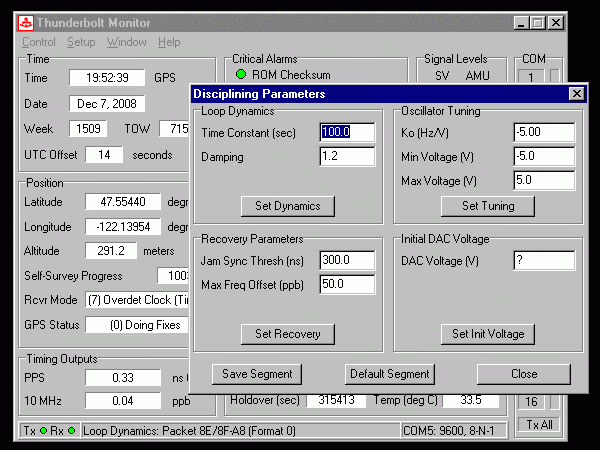
Change Time constant (to 10) and click on Set Dynamics and Close:
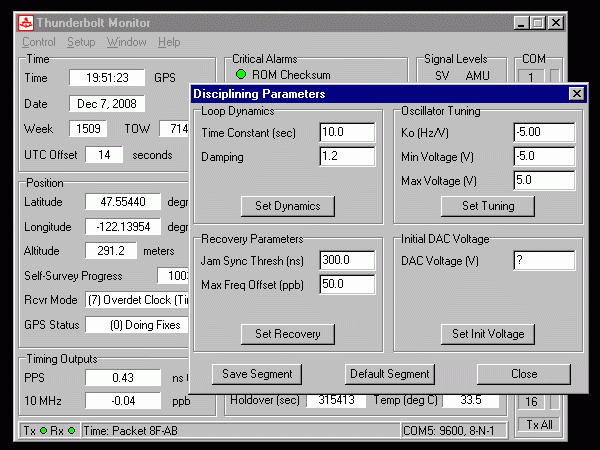
First run, Time constant equals 100 (default):
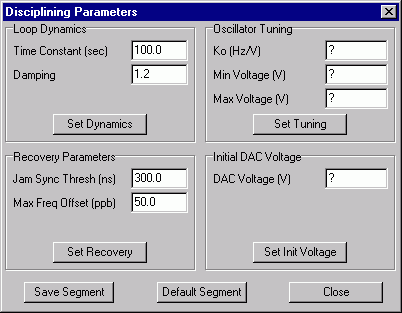
Second run, Time constant equals 10 (very short):
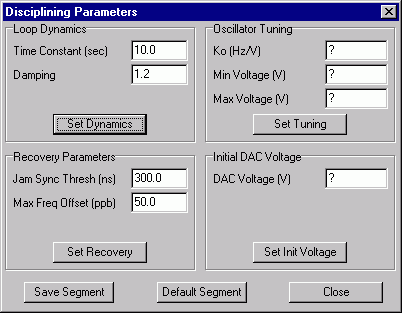
Third run, Time constant equals 1000 (very long):
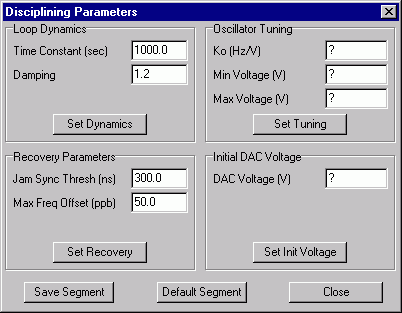
Clearly, for this particular unit, a time constant of 1000 seconds gives better performance than the default 100 seconds. This is likely due to a combination of factors: a particularly well-aged, low-drift unit, a hand-picked better-than-average short-term stability, a very stable laboratory environment (vibration, voltage, temperature), and a high-quality GPS antenna location. Another main factor might be that Trimble sets the default conservatively.
Not all GPSDO, perhaps not even all Thunderbolts, will look exactly like this one. Stability and drift varies from unit to unit. Environmental conditions and antenna performance change from user to user. But the main point is to see what effect changing tuning parameters has on the measured stability of the 10 MHz output.